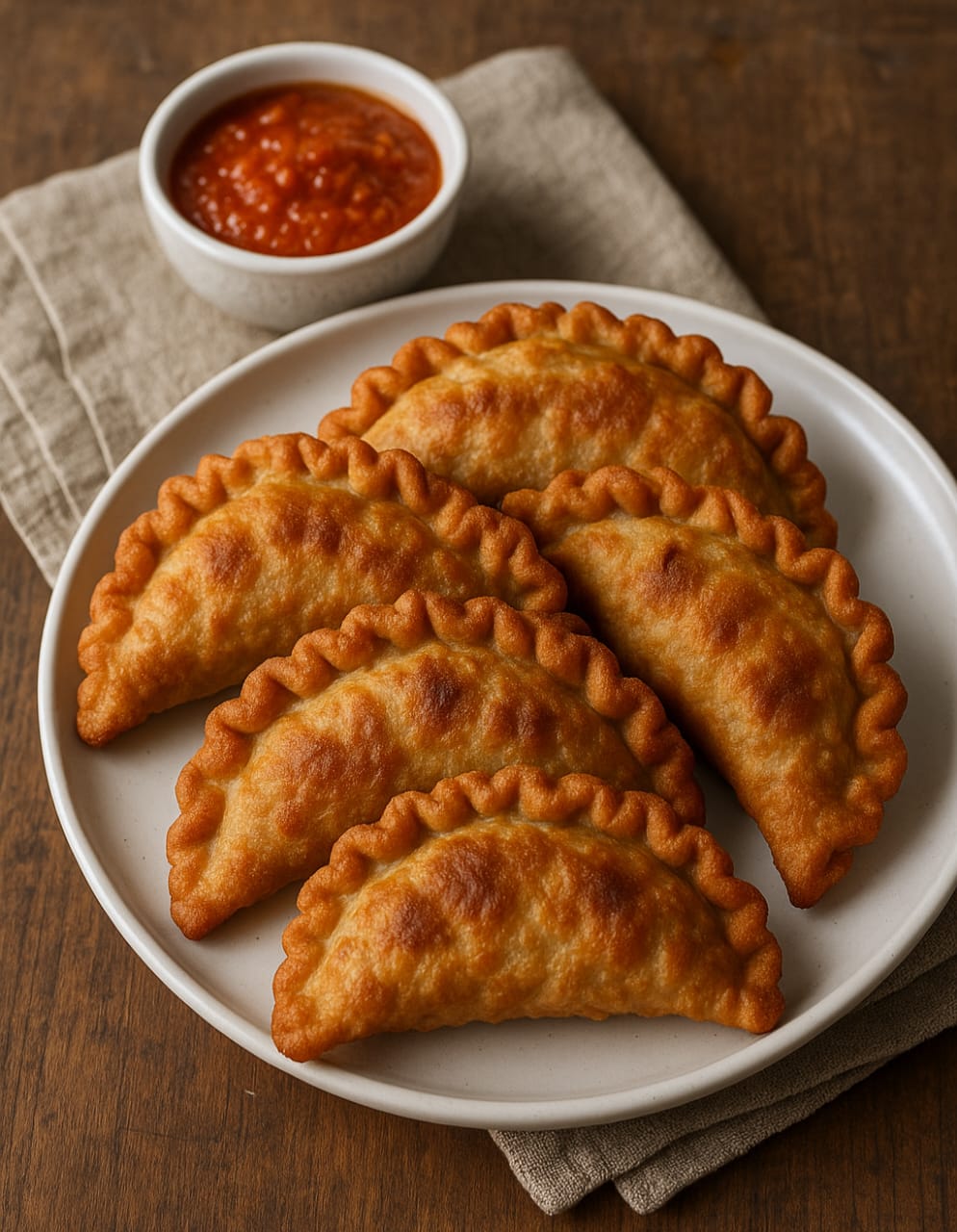One of the dominant elements that bridges travel memories to a place is food. Once upon a time, Western foods were the travel flex of the era. Someone would casually drop an experience of eating authentic pasta in Italy. The listening ears would perk up, and then another would follow up with her “foie gras” and “Escargot” tales, and those sounded so exotic, while at the same time exhibiting how well-traveled the person was.
As someone from the Himalayas, without such travel experiences, those were non-relatable conversations for me until a friend got me a can of foie gras, from which we made momo. Not the best use of foie gras, but it worked in the cold winters of the mountains! Another time, I tried the Schinkenbrot, which tasted great. And then a friend baked me Sauerteigbrot and proudly explained the history behind it. I loved it. It also made me realize how important food is to connect to a place. And it didn’t always have to be about a place half a globe away.
For instance, food diversity can be best experienced in India. Travelling in India is like travelling to many different countries within a country. However, you can always distinguish the region by its food habits. One immediately thinks of Mumbai when “vada-pav” is mentioned, or Bengaluru when “dosa” is the subject, and closer home in Kolkata, “Mishti Doi” is a synonym for the city.
Well, as you travel the Himalayas, you will also be pleasantly surprised to discover its many food cultures. Anyone who has walked the hills and mountains of the Himalayas can promptly point out momo as the ubiquitous meal experience. However, there are more to the Himalayas than these tasty dough preparations. Let’s look at some of the lesser known (to tourists) but delectable traditional fares consumed in different parts of the Himalayas.
1. Shapta
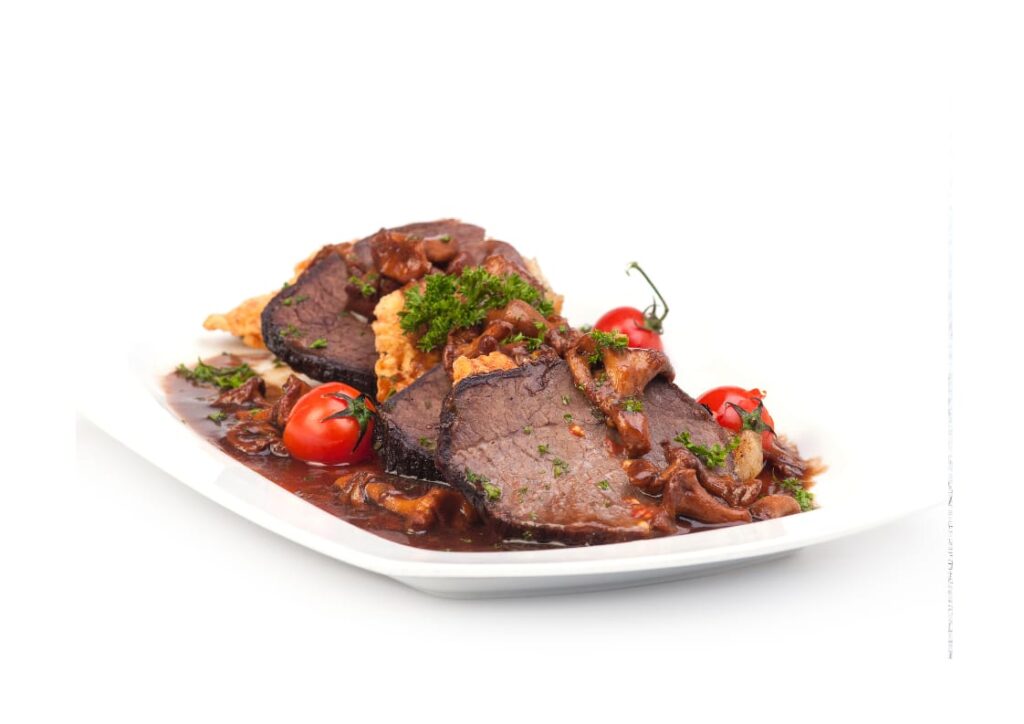
A Tibetan specialty, this is a non-vegetarian’s delight. Approximately 2″ Medium-thick slices of beef meat, normally from the rounds and shanks, pan-fried to tenderness. No marination is needed. Just drop a few Himalayan green chilli splits, tomato wedges, a few cloves of crushed garlic, and season it with Himalayan Schezwan pepper and salt.
Best had as bar snacks, or as a side dish to your plate of rice or roti.
2. Shyaphaley
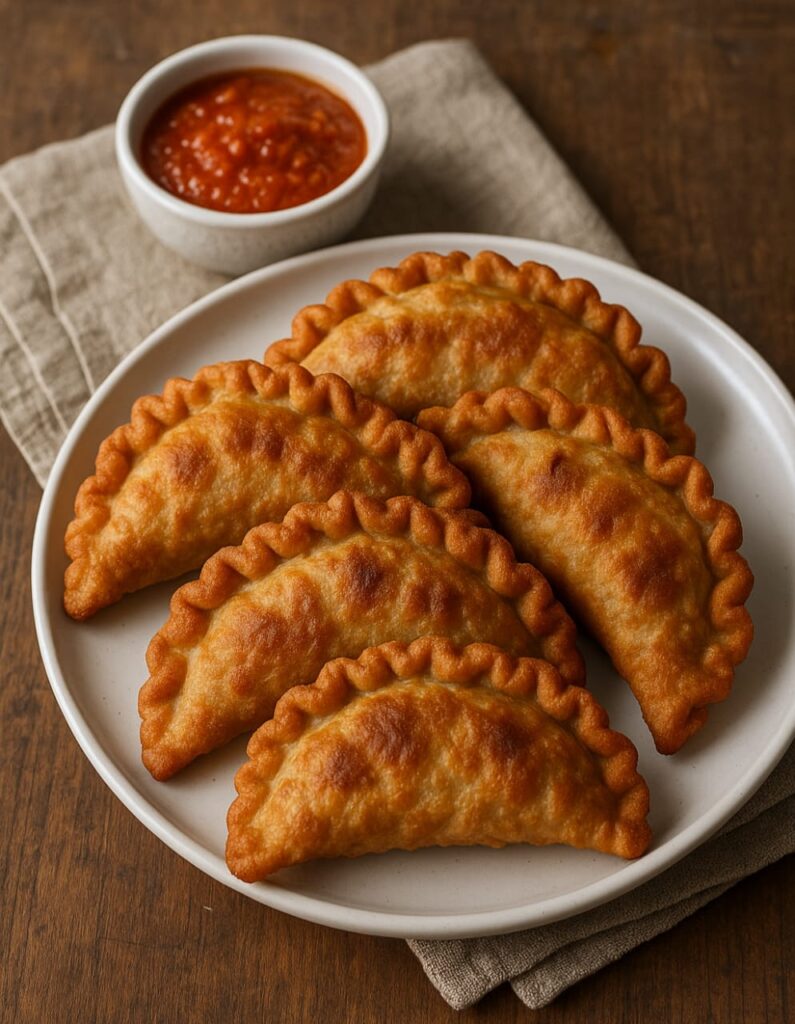
This is a sizeable version of the ubiquitous momo that one can find on every street and corner of Ladakh, Nepal, Sikkim, and Bhutan. A wholesome bread preparation from the mountains, which is now a staple in most local kitchens across the Himalayas. Originally a meat-based patty, it now has vegetarian and cottage cheese versions.
3. Skyu stew
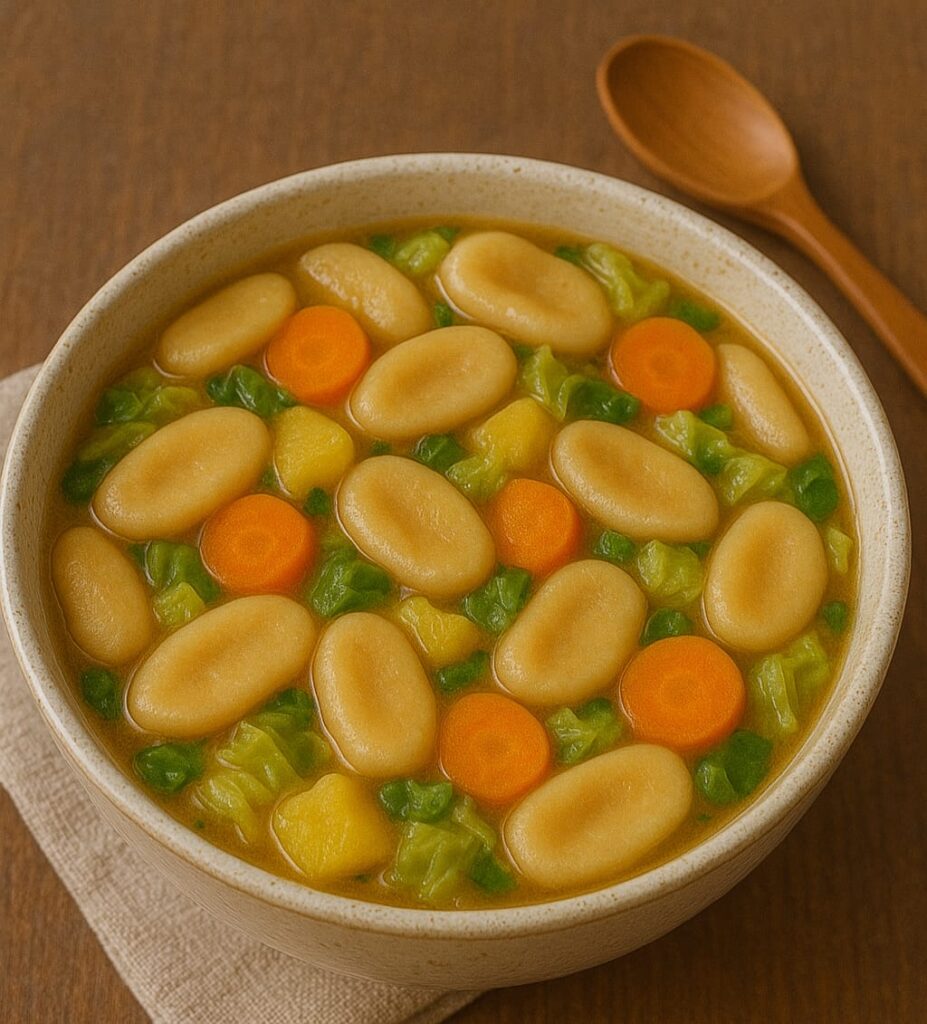
Also known in the Nepali language as “Kauri”, and in Tibetan, “Bakthuk”, this comforting soup-based noodles is made in Ladakh by flattening the dough with the thumb and making it into thumb-size disks, added in to vegetable or meat stews. In the versions of “Kauri”, or “Bakthuk”, seashell shapes are more popular.
3. Shikam Paa
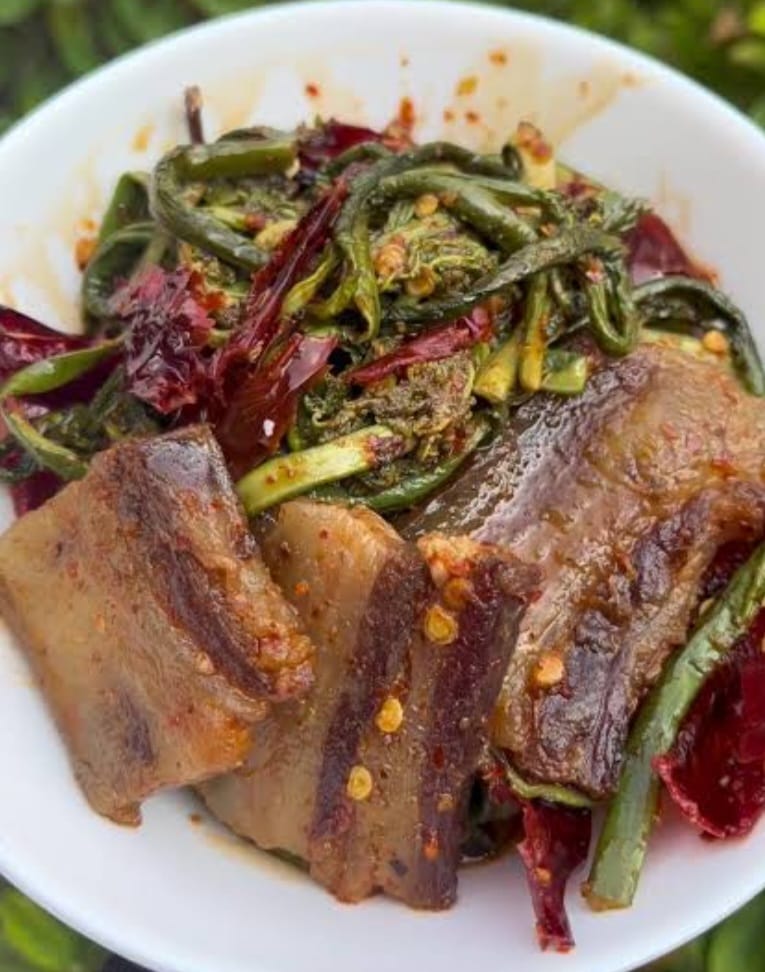
The ultimate Himalayan pork dish from Bhutan, this dish is prepared with Autumn – Winter air air-dried sliced pork, garnished heavily with dried Bhutanese chillies, and salt. The specialty of Bhutanese dish, such as this, is the absence of aromatic spices, and reliance on the natural taste of meat, with only the hotness of chillies. Shikam Paa is an unbeatable pork dish in the Himalayas, closely rivalled only by another Nepali pork dish, “pork with mustard greens”. My vote, however, goes to Shikam Paa.
4. Bhutuwa
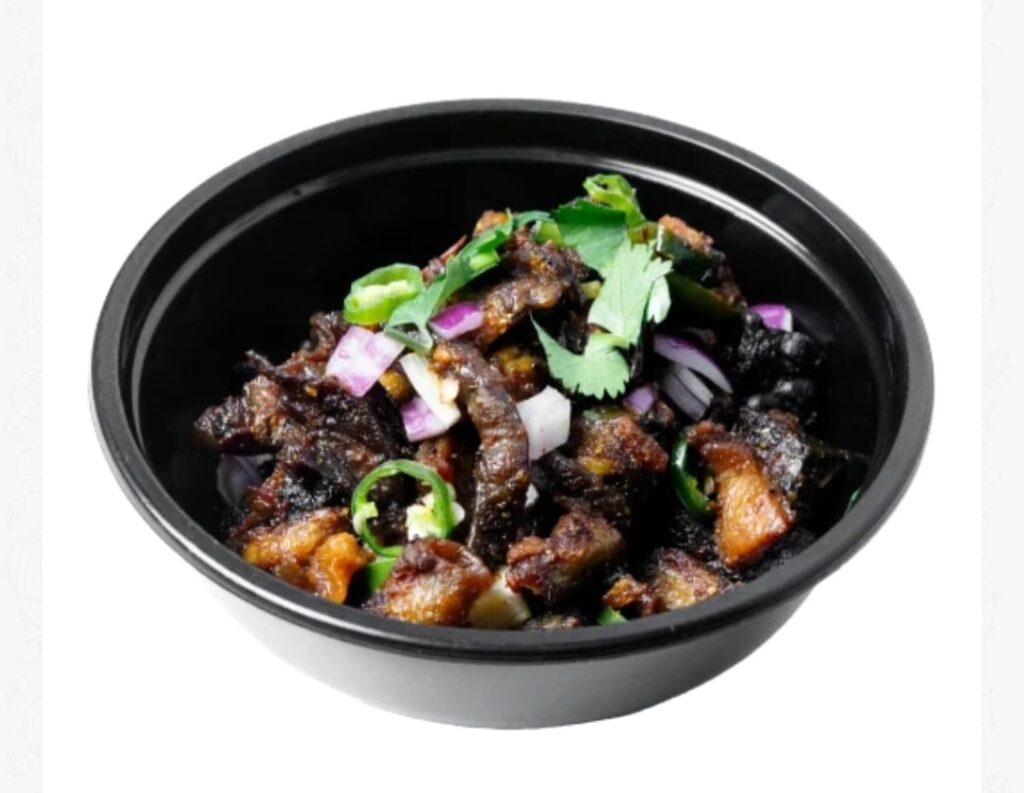
A quintessential Nepali finger food, accompanied greatly with Tongba (Himalayan millet beer), or Raksi. This matches perfectly with any liquor, as well as a side dish with servings of rice and rotis. Bhutuwa is made with small, cube-sized meats. Typical bhutuwa meat is prepared from home-raised chicken and buffalo meat. It is wok fried in mustard oil with diced ginger and garlic, split chillies, and spiced up with cumin seeds, Fenugreek, turmeric, salt, and chilli powder.
5. Gyurma (Ghyima)
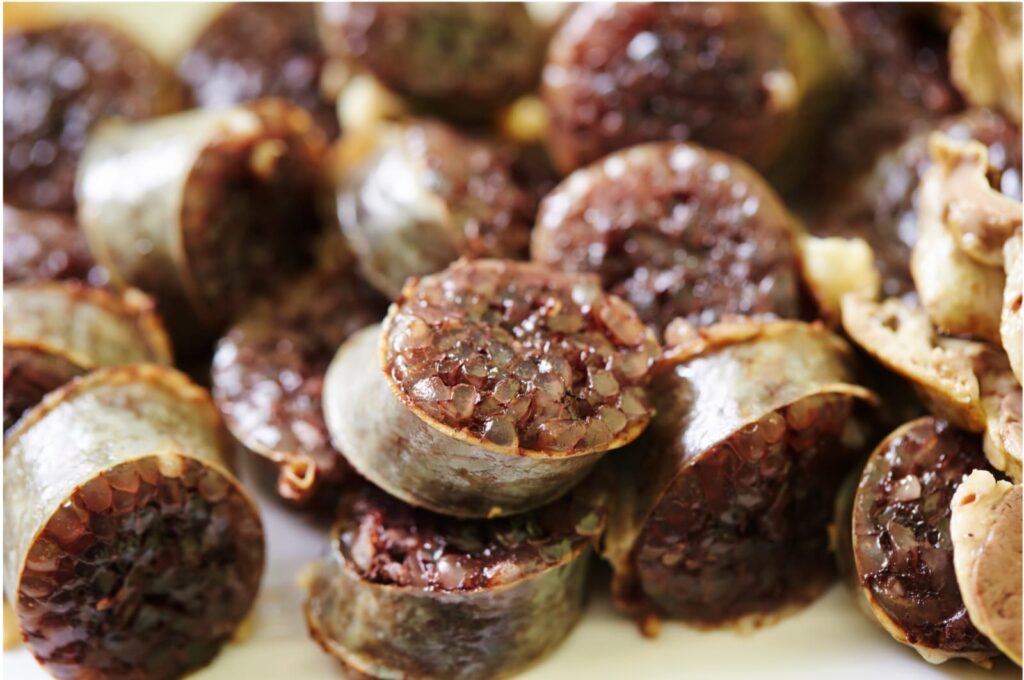
This Himalayan blood sausage originates from meat-loving tribes of Tibet, Nepal, and Bhutan. It is made from minced red meat, blood, rice, and flour mixed and funneled into bull intestines. A heavy dose of Schezwan pepper brings out that classic mala heat.
Fried and served as a side dish with rice, noodles, or phaley (Tibetan bread), Gyurma is also a preferred finger food, usually accompanying Tongba, or Ara.
6. Gundruk ko Jhol
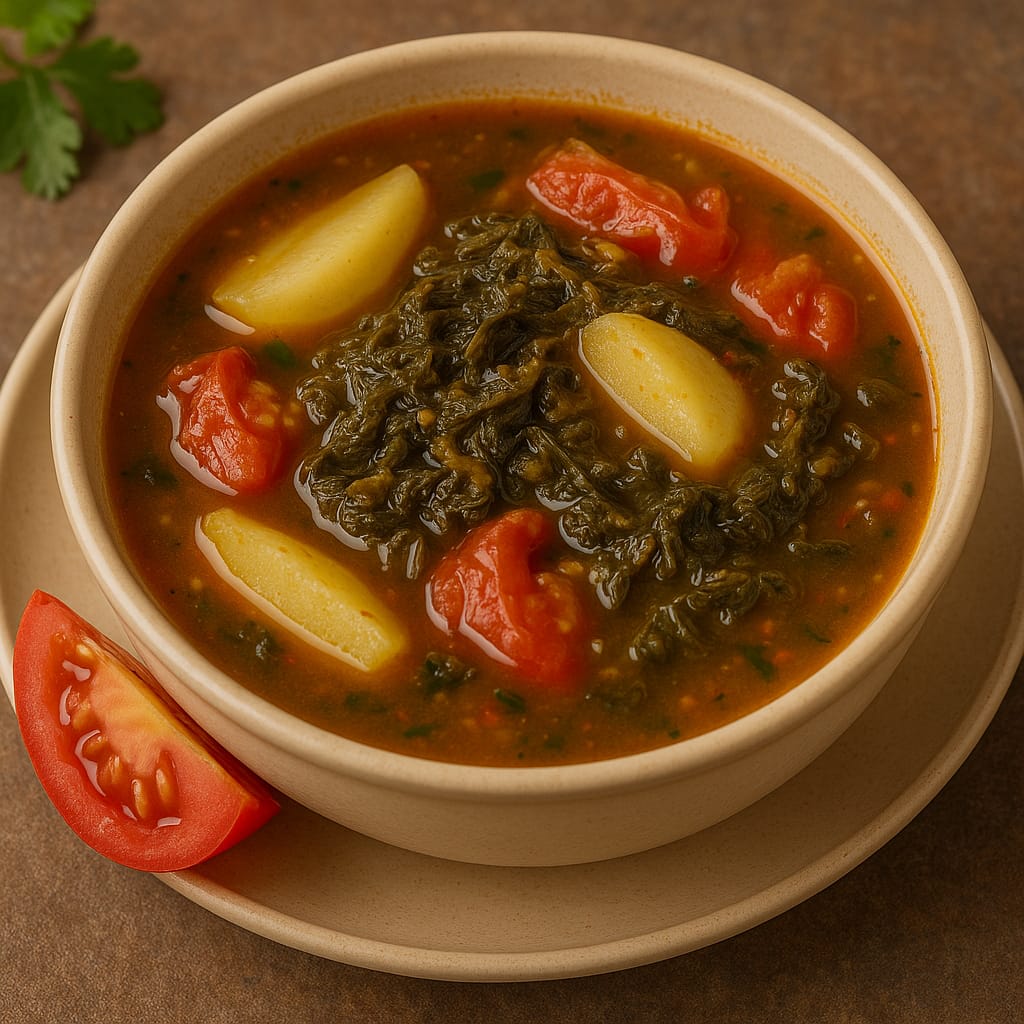
This soup, made from beaten and fermented leaves of mustard greens, has been an integral part of Nepali cuisine for centuries. Historically considered a poor man’s soup, Gundruk ko Jhol has been greatly acknowledged in modern health-conscious times for its digestive and anti-bloating properties.
Potatoes, garlic, and tomatoes are added to balance out the sourness of the dry fermented leaves.
7. Rildok (The Sherpa Soup)
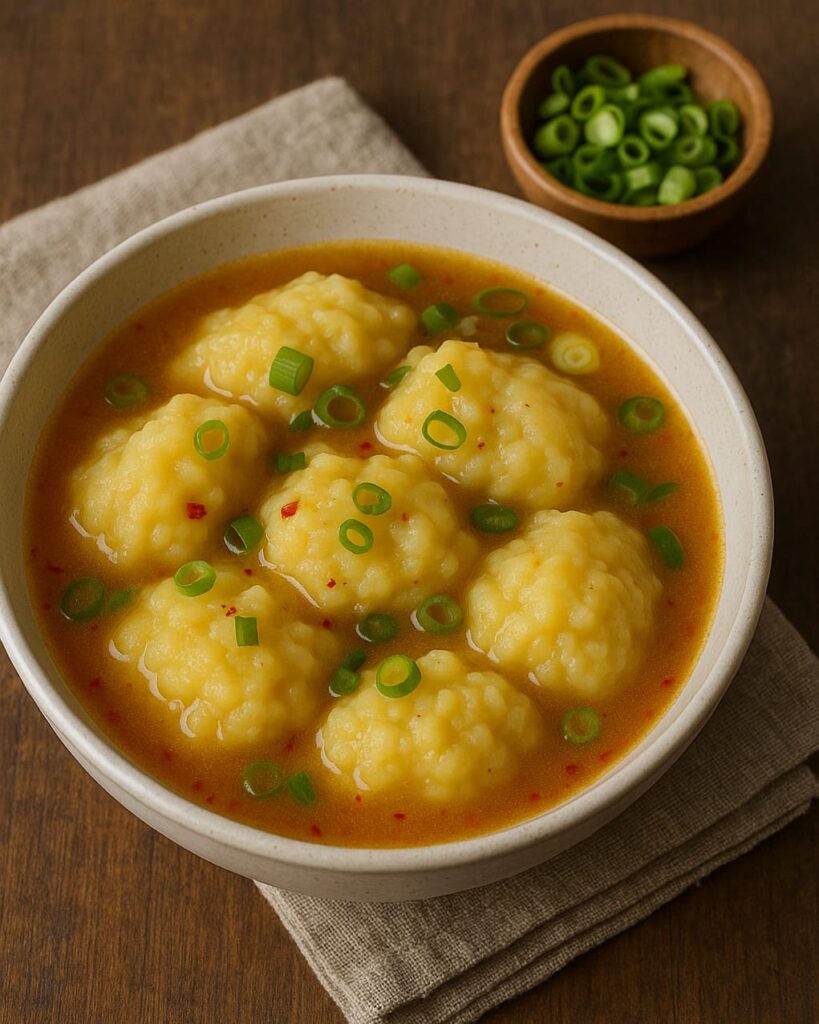
This wonder soup from the mountains is unique not only in terms of taste, but also in the diligent making process. The potatoes are synonymous with the Sherpa tribe as an energy food. Therefore, it occupies an important place in the Sherpa kitchens. Rildok requires the potatoes not only to be boiled and peeled but also to be thoroughly beaten and pounded until they become a thick, gummy paste. It is then made into small balls, or dumplings, and dumped into mixed vegetable broth, of which garlic, ginger, onion, tomatoes, green chillies, and Schezwan pepper are the main ingredients. This is a winter specialty, and can also be enjoyed as the main dish.
8. Kwati
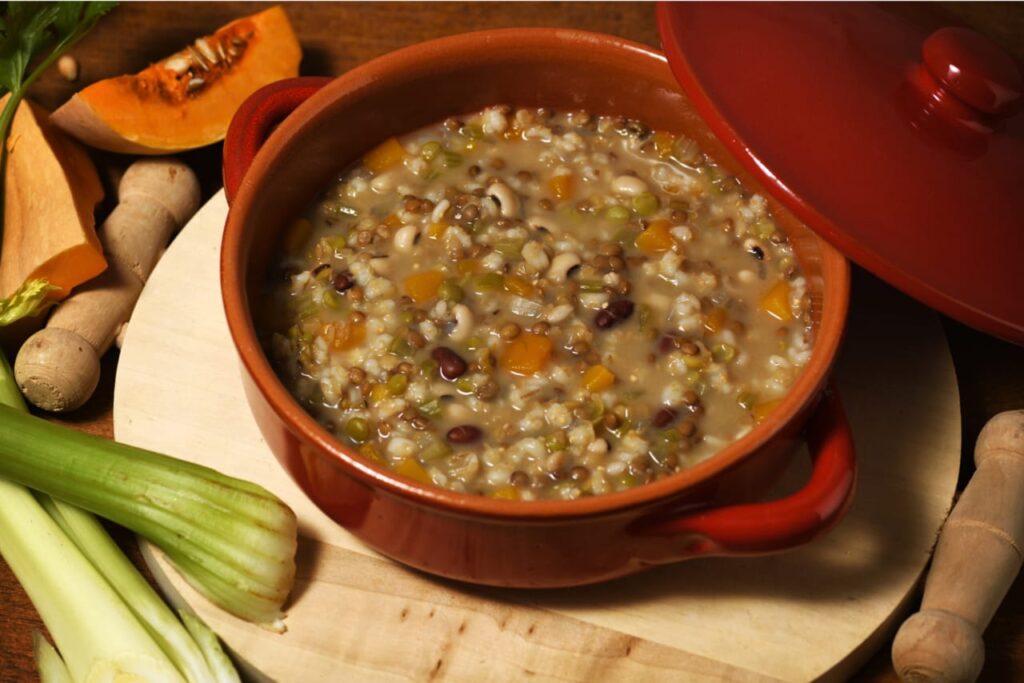
If there’s a vegan powerhouse of a stew, Kwati has to be that stew. This is a Newari dish made from nine types of beans, namely soybean, kidney beans, green beans, black-eyed beans, fava beans, black beans, white beans, brown chickpeas, and garbanzo beans.
Traditionally, Kwati stew is consumed during the rainy months. If you are in Nepal during the rainy months, you will not miss it.
9. Siddu
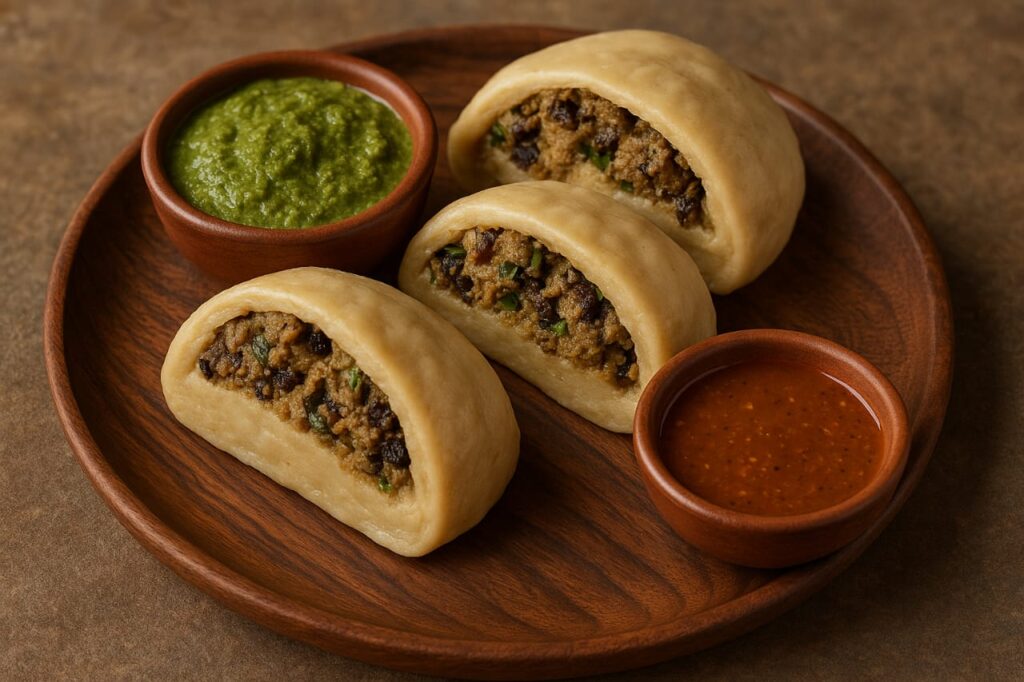
Another vegetarian wholesome power dish, hugely popular in Himachal Pradesh. Traditionally made from whole wheat flour, the new health conscious generation can have different variations made from multigrain flour, and gluten free flour as well. This is a super healthy, sumptuous food from every angle. It is steamed, has stuffing of plant protein super food like split black lentils, walnuts, and traditional spices. It is a versatile dish which can also be made into a sweet version using jaggery. Vegans can skip the ghee and enjoy.
10. Chhurpi Soup
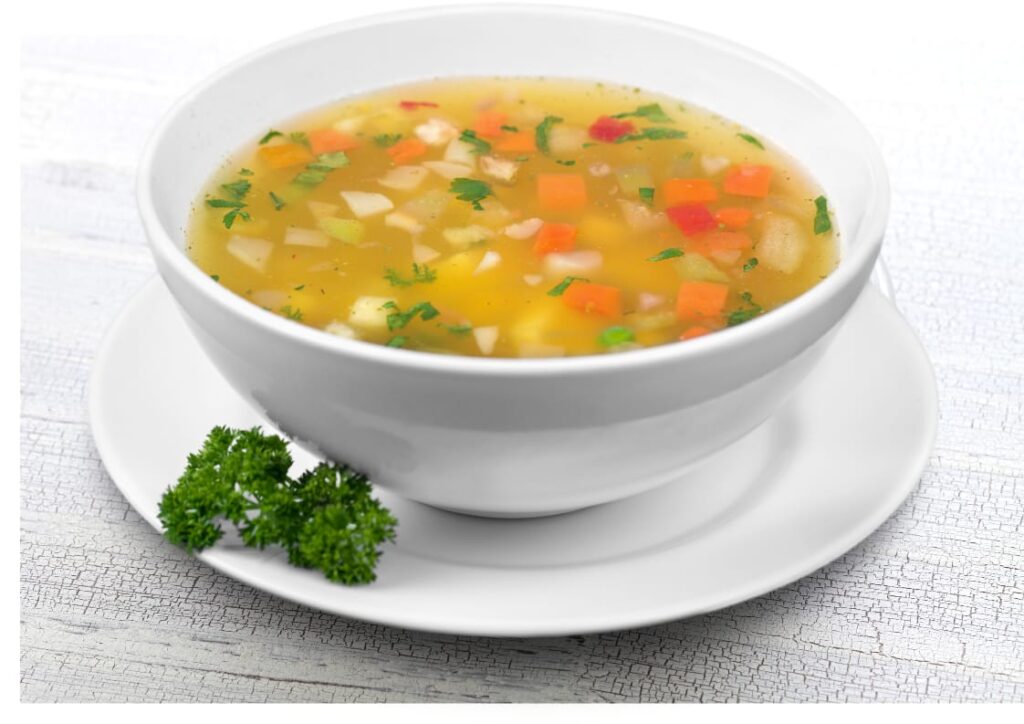
This soup is typical of Bhutia kitchens of Sikkim, where it is known as Tokkhu. Traditionally made from fermented cheese, known as Chhurpi, in a broth of milk, water, tomatoes, ginger, chilli peppers, and salt, this thick soup can be enjoyed in cold weather, as a side dish to accompany rice or rotis.
11. Ema Datshi
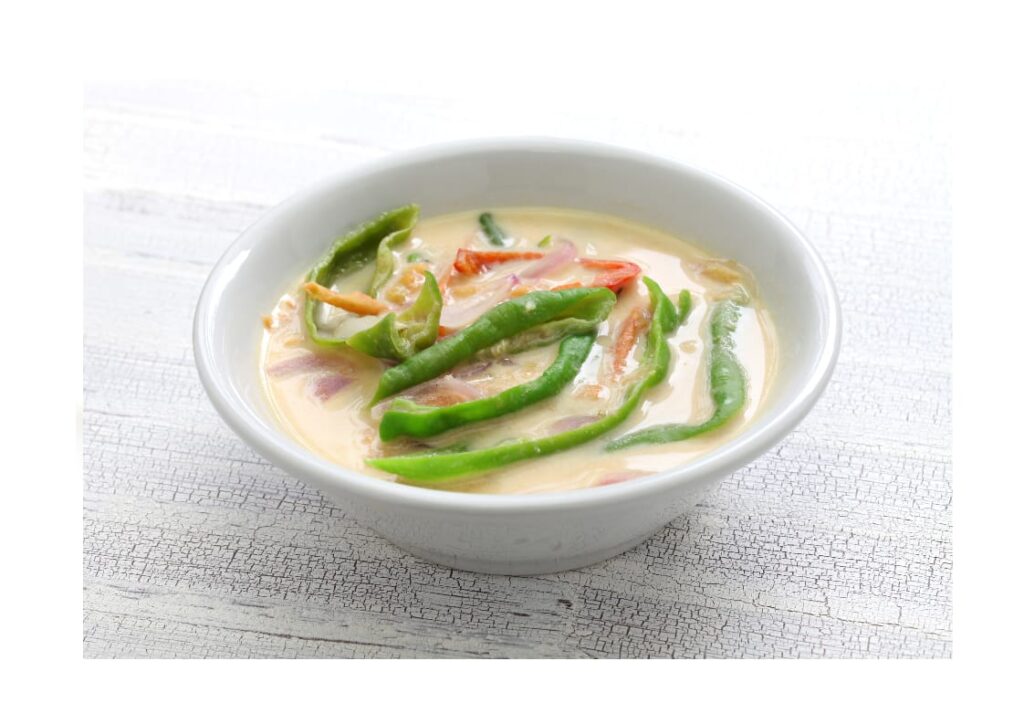
No home in Bhutan is complete without a daily serving of Ema Datshi. I speak the truth. It enjoys a status akin to a national merit. Ema Datshi is a simple combination of two important ingredients – Bhutanese Chillies (Ema) and Fermented Cheese (Datshi), seasoned with salt. But the result, in expert hands, is magical. You may serve the red rice without meat or vegetable side dishes, but without Ema Datshi, it is almost sacrilegious!
Best recommended to enjoy this dish in Bhutan; at a dinner on a winter evening, in a room heated with a Bhukari, and in the company of good friends, and family!
12. Dhiro
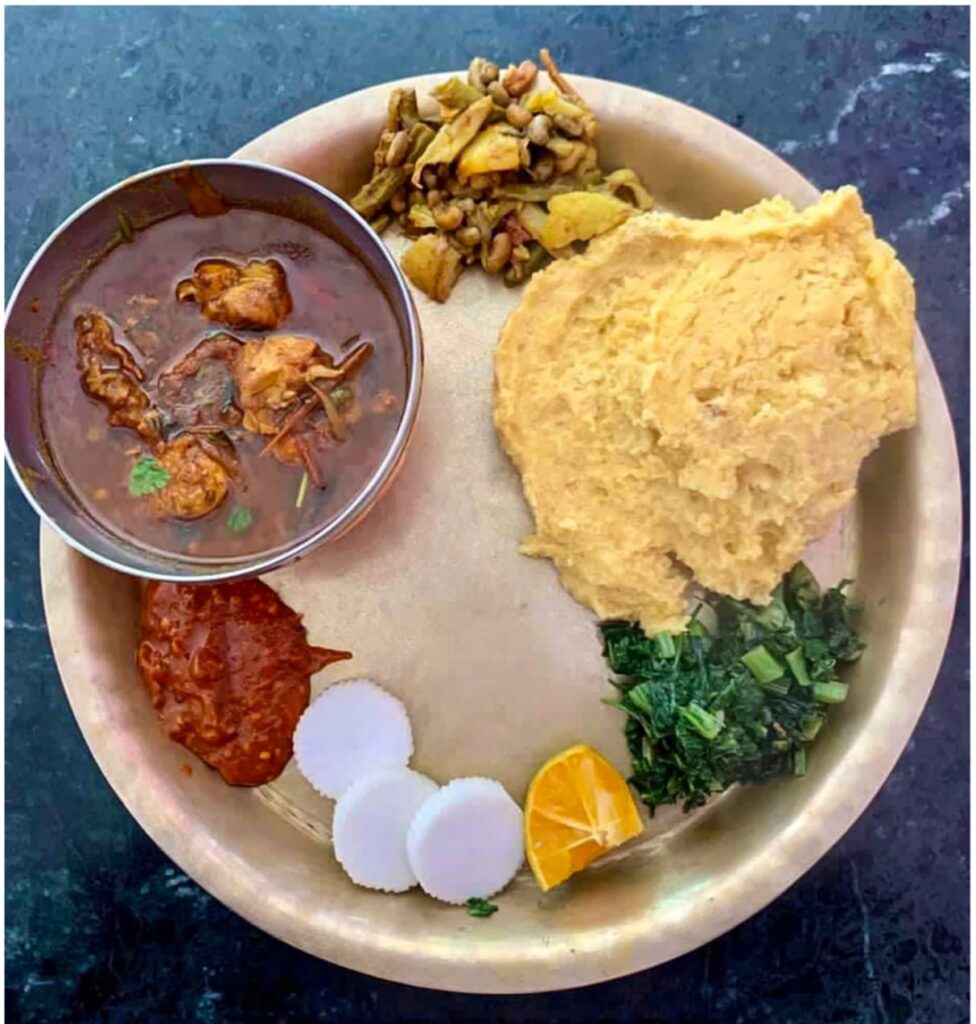
The once food of the Nepali poor and the mountain herders is now enjoying a gourmet status in the Himalayan food circles of Nepal, Darjeeling, and Sikkim. In the current super food seeking generation, this thick gummy preparation, traditionally made from maize, millet, or whole wheat flours has taken the healthy food conscious world by storm. Incidentally, dhiro is not as simple to make. It requires an experienced hand of continual stirring, while adding water in intervals, to bring out the perfect consistency. Interestingly, dhiro is also not to be chewed, but is to be swallowed with a gulp. The perfect combination of the gourmet version is the dhiro accompanied by chicken or mutton curry and ghee.


